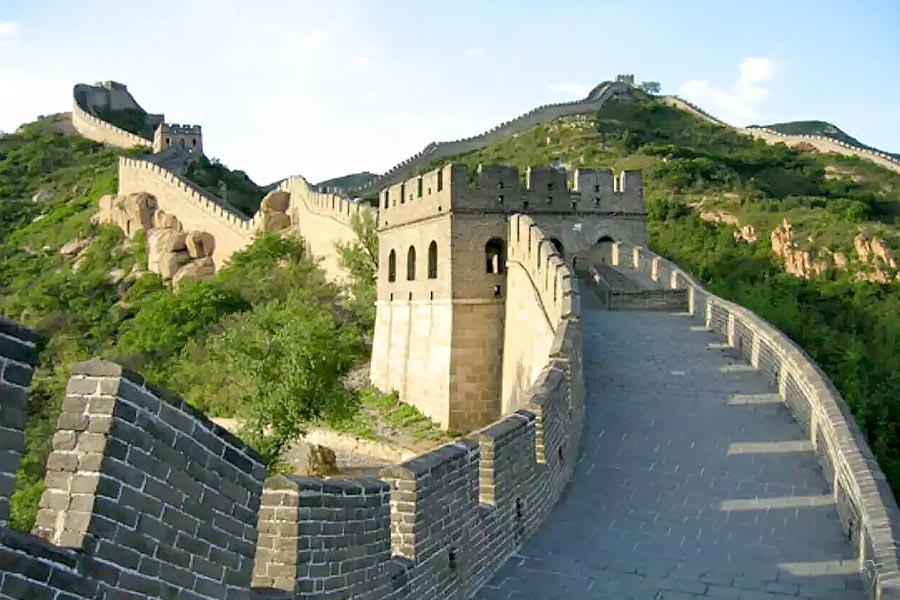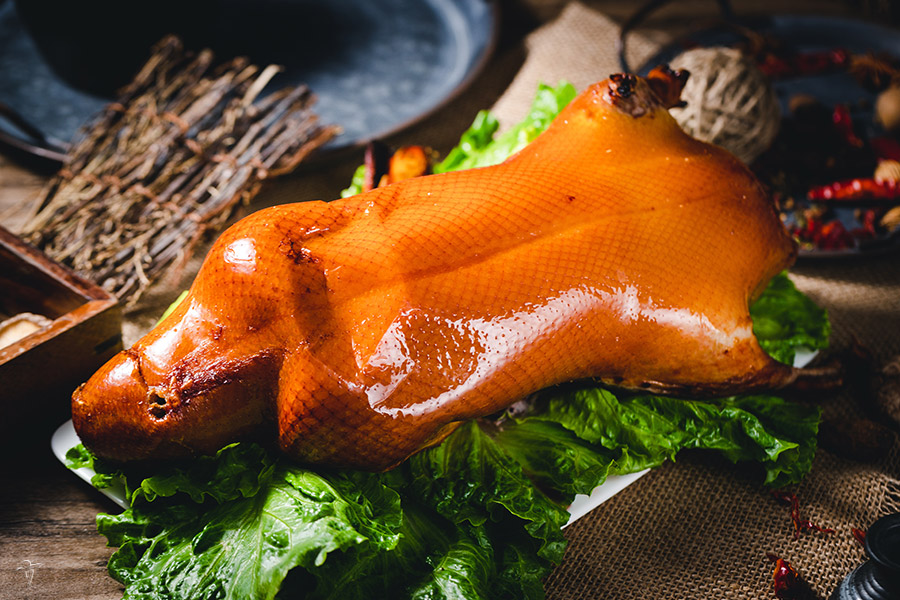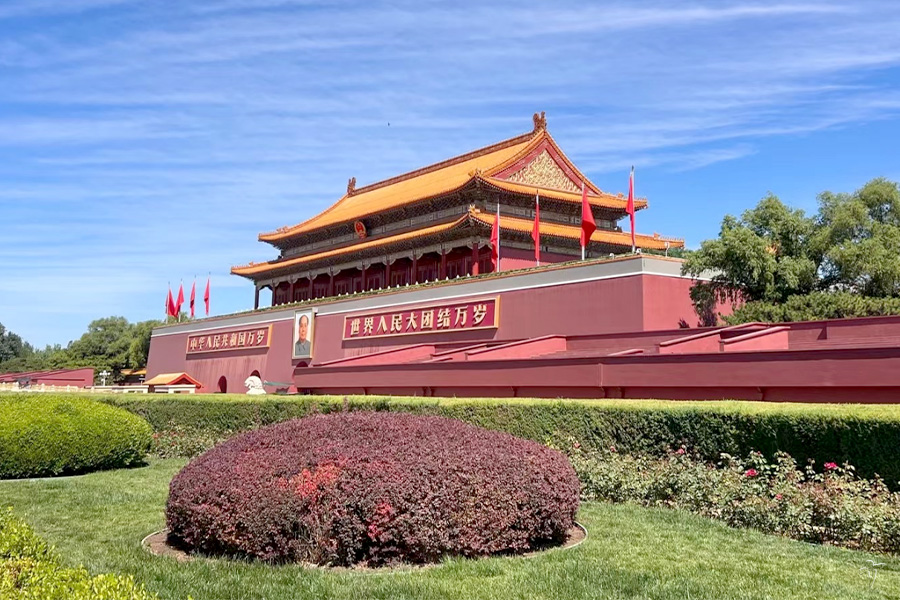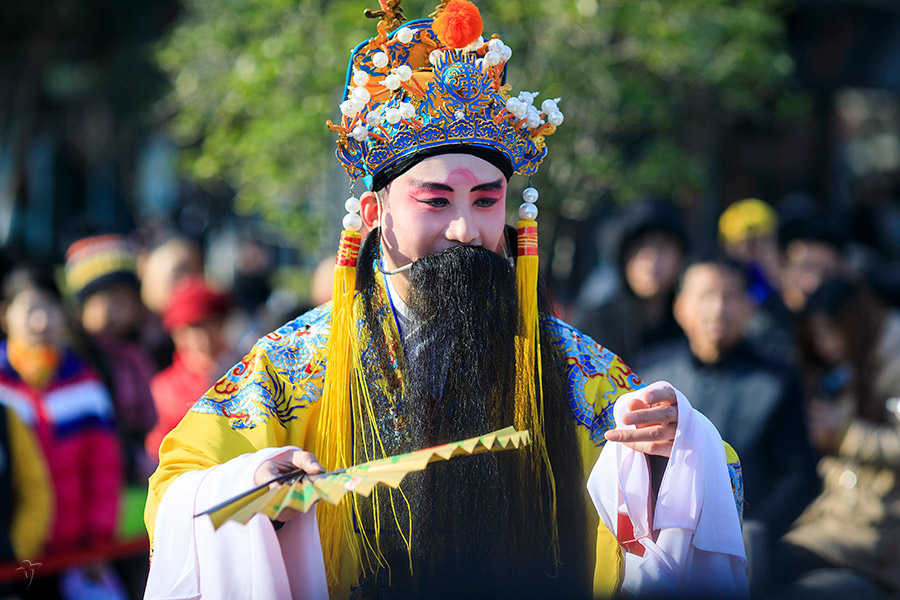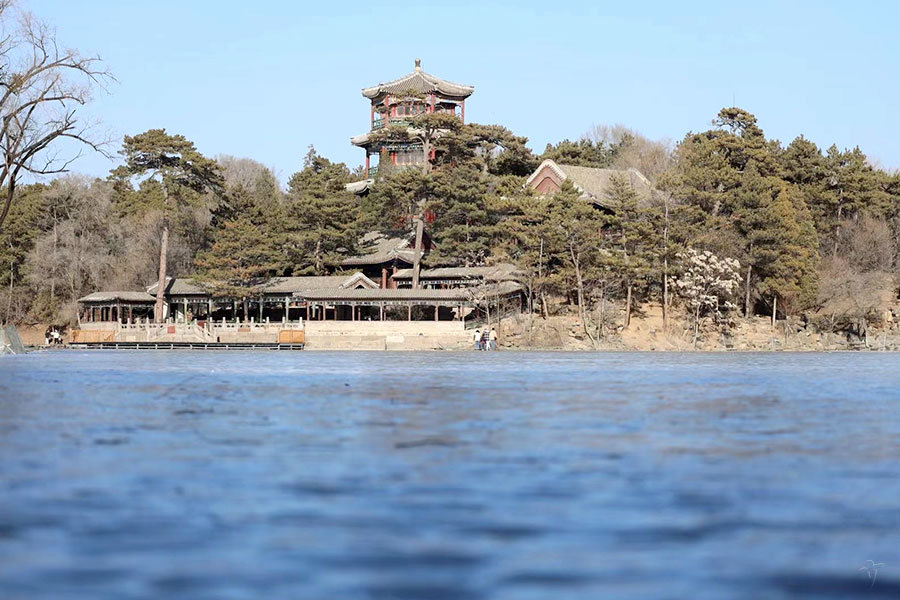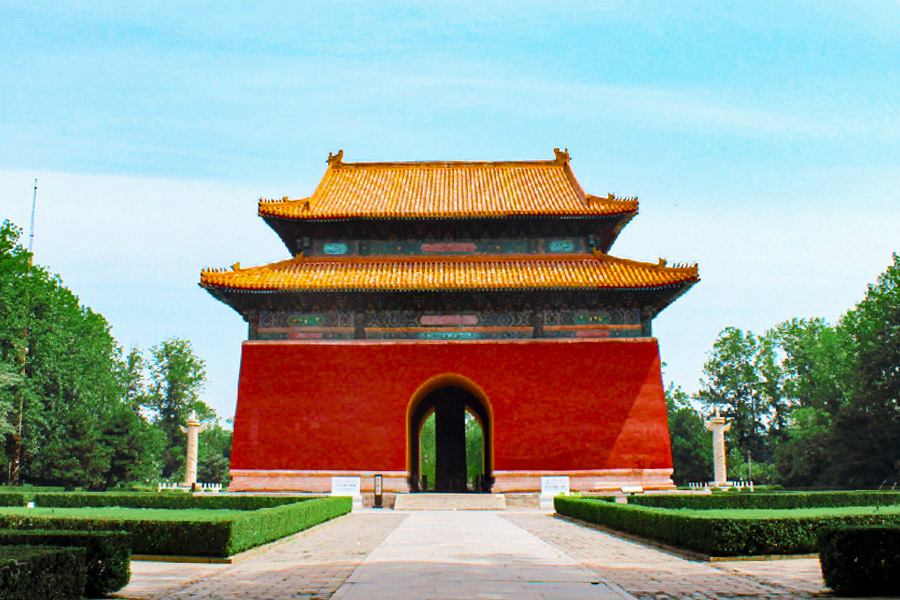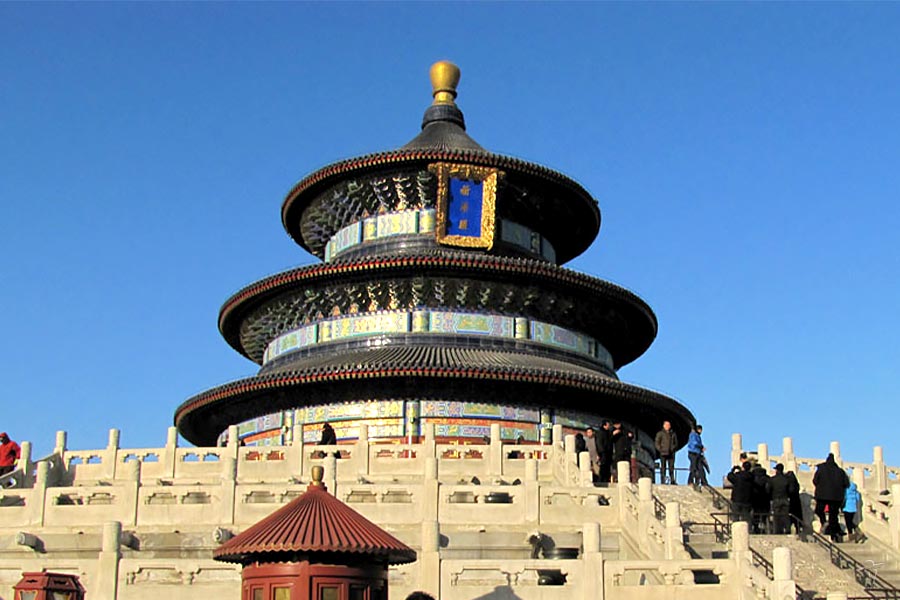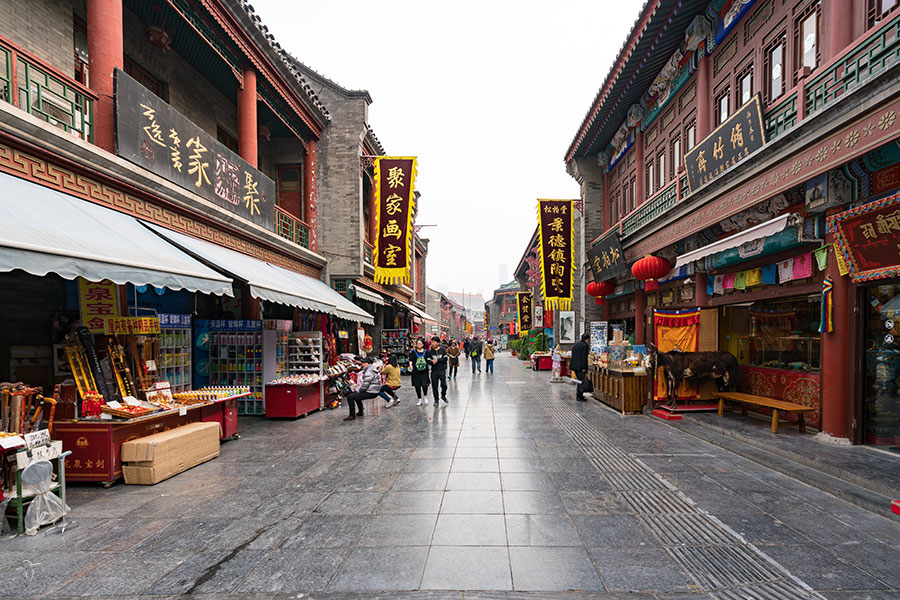Hutong Tours in Rickshaw
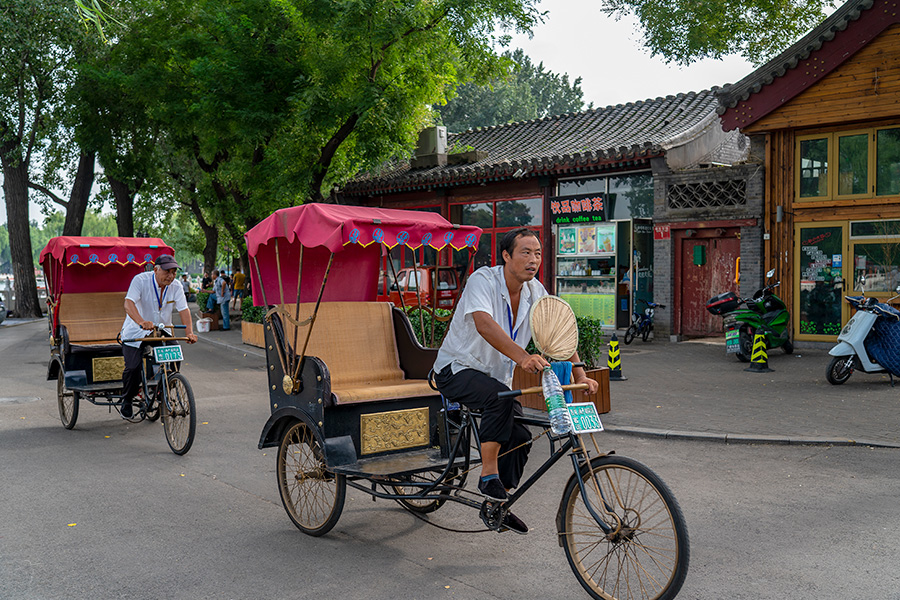
Chinese name: 北京胡同
Location: all around the Forbidden City, Beijing Municipality
How to get there: by foot, rickshaw
Best time for visit: all year long
A Beijing famous highlight and symbol of China
Beijing Hutongs are maybe some of the most emblematic spots symbolizing Beijing city in the eyes of tourists coming to China worldwide. As an important part of the culture, history and way of life of Beijingers, Hutongs are cherished and tempted to be preserved for their rich historical and cultural past. Hutongs designate a typical old lane or small street that originated from the Yuan Dynasty (1271-1368). The name originally comes from the Mongolian of "hottog", meaning "water well" used about 700 years ago. Today changed to "hutong" (胡同), the word means a small alleyway or lane. Tens of thousands Hutongs surround the Forbidden City today although some destructions have appeared for about 20 years because of the city's expansion and need for industrialization. Beijing Hutongs embody the old part of Beijing, the most typical and picturesque area of the capital that is a pleasure to visit hiring a rickshaw and making some stops discovering some famous courtyards. These settlements around which people lived are formed by countless lines of courtyards (siheyuan, 四合院) with their own layout and structure. Formed by a passageway between two courtyards, the combination of Hutongs and courtyards form like a delicate chessboard with gardens, fine rockeries, and ancient ruins. Real symbol of Beijing, Hutongs are a jewel of culture and architecture, a place where a visit transports you in ancient Beijing. Behind every Hutongs lies a story to be discovered.
Hutongs in depths
When looking at the architecture and particular lay out of Beijing Hutongs, one can notice the special orientation of the lines and courtyards. Indeed, Hutongs run from east-west and north-south for these axes apply to the "feng shui" rules famous in China and Asian countries in general. Taking in more sunshine and resisting more to the cold winds from the north, Hutongs and courtyards are an ordered maze which is tempting to wander for those not afraid of getting lost.
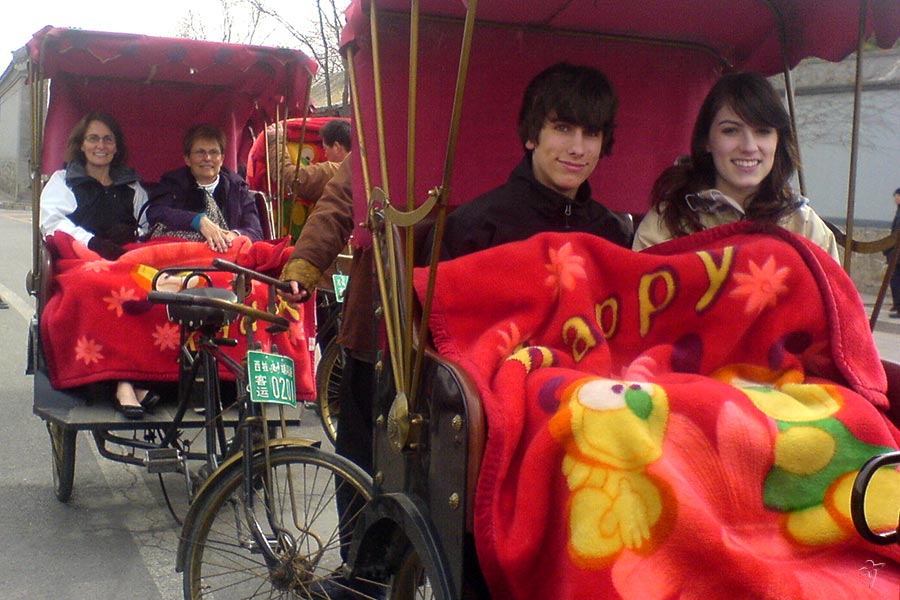
Interesting facts about the Hutongs are that some of them are of a great diversity in term of size. The longest Hutong "Dong Jiaomin Hutong" is 6.5 km (4 miles) long; the shortest "Guantong Hutong" is just 10 meters long and the narrowest only about 40 centimeters (16 inches) wide. Beijing Hutongs are impressing for there unique disposition and variety, some having even more than 20 turns like "Beixinqiao Hutong".
History of Beijing Hutongs
Beijing Hutongs are where feeling the original way of life of Beijingers and their traditional culture. By the time Beijing became a capital city for the first time during the Jin Dynasty (1115-1234), no Hutongs existed around the Forbidden City. The construction of these little dwellings started during the Yuan Dynasty (1271-1368) after the original city of Beijing was destroyed because of war. Awards for nobles and heroes, Hutongs and courtyards were actively constructed around water wells, paying attention to keep passages between houses to let light and ventilation come in and out. After a few years, countless passages crisscrossed the old capital like a chessboard, but only 29 of them could be called real "Hutongs" for they measured 9 meters (9.8 yards) wide or less. Roads measuring more than 18 meters were whether called "side streets" or "main streets" for the longest ones.
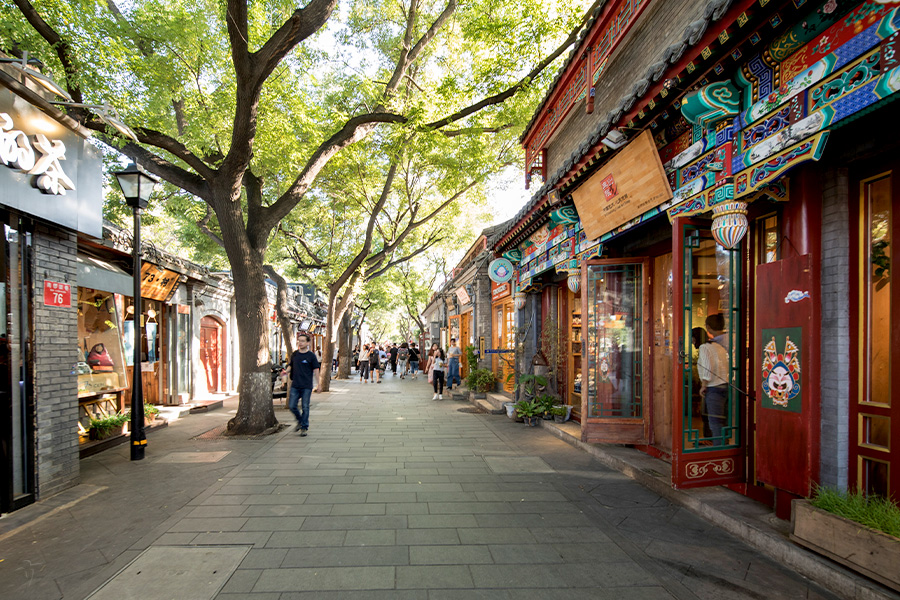
During the Ming (1368-1644) and Qing (1644-1911) dynasties, Hutongs had different appearances and were used in different ways. Some Hutongs were indeed used as grain warehouses for needs at the Imperial Court in the Forbidden City. One of the Hutongs, now known as the "Lumicang Hutong" as it was the Ming Dynasty Lumi Grain Depot is one of the most ancient of the area and a curiosity for tourists. In general, all the basic appearances of the Hutongs were formed during these periods although that is still possible to find some parts tracing back to the Yuan Dynasty, such as the Zhuanta Hutong in the west which was renown as the home of the "Chinese Shakespeare" Guan Hanqing (Yuan Dynasty).
Having witnessed the development of Beijing city and its sprawling urbanization, Beijing Hutongs are the heart and even the very soul of the capital. The "Weaving Girl Hutong" located at the center of Beijing Hutongs is a curiosity around which a legend developed. Together with the "Cowherd Bridge" the scene suggests the holy highness of the Emperor as the son of the Heaven. More than just an accumulation of dwellings pilled on each other, Beijing Hutongs are the representation and living memory of Beijing ancient times and culture. Sophisticated and old, the Hutongs and courtyards give to the area a magic atmosphere that cannot let wordless.
Beijing Hutong Culture
According to ancient tradition, the name of a Hutong represents its origin, location and history. Indeed, there meaning are important regarded the very culture of Beijing. Hutongs bearing the names of horses and mules for example are certainly the places where these animals were once traded in ancient times. For many Beijingers, Hutongs are embodying a whole lifestyle far away from the tumultuous noise of the modern city center. Area separated from the outside world, Hutongs are the typical places in Beijing where seeing groups of old persons sitting together and playing cards, mahjong or Chinese chess as well as performing traditional Chinese forms of exercise like Tajiquan, dance and folk songs or Peking Opera arias in the morning. Mainly occupied by the elderly, Hutongs are a calm area of Beijing that Beijingers love to hang around for tasting some traditional food sold in carts or small stalls: from flavored ice to long kebabs of crab apples, local delicacies are a must.
Important to the culture of Beijing city, the many Hutongs have been the center of many operas, plays and movies about them and the people living in. Winding from east to west, north and south, Hutongs are like the roots of Beijing people, remembering them about their ancient easy lifestyle. Many important Chinese people lived in the Hutongs in ancient times, such as China's greatest novelists and playwrights of the 20th century: Lao She (1899-1966). The many teahouses located there were already great spots to take a rest and discuss the issues of the traditional society while enjoying the most delicate tea. Important to Beijingers, some songs were created at the appraisal of the Hutongs, like the modern love song "Shower" from Zhang Yang's (1999). Movies found there the perfect scene also for typical movies retracing some famous peoples' life. Peaceful and harmonious, the life in the Hutongs was very different from other parts of the city and is even more different to Beijingers' life in the modern areas of the city. Away from the hustle and bustle of the streets, people living there could afford to their daily needs, fully satisfied by the hawkers who sold vegetables, eggs, fruits, and snacks, taking care of themselves by having a hair cut at the itinerant barbers, etc.
More than anywhere else in Beijing city, people living in the Hutongs love their way of life. There lies a real culture of happiness and harmony that is threatened by the sprawling need of housing of the city. Leaving in the same Hutong for generations, there are no ways to ask people leave their dwellings for seeing them destroyed for new modern districts. Hutongs are part of the culture of Beijing, and are a place to preserve for the future generations.
Famous Beijing Hutongs and stories
Although diminishing a lot since the Ming Dynasty, Beijing Hutongs are still the center of interest of local people and tourists coming in China from worldwide. Still possible to be visited, some Hutongs are historically famous ones worth a visit, having witnessed the development of the capital of Chinese people.
- The Curtain Storehouse Hutong (Lianziku Hutong, 帘子库胡同)
This Hutong taking its name from an old custom of Empress Dowager Cixi, Qing Dynasty (1644-1911) is were seeing today some modern shops on both sides. The name originates from the custom of the Empress to hold court affairs from behind a curtain for it was improper for a woman to govern and sit in the golden throne (Emperor Tongzhi was too young to handle state affairs when he came to the throne in 1861). The curtains, produced in the areas near the Forbidden City were kept in secret in "The Curtain Storehouse Hutong" for it was forbidden for commoners to have them.
- Yan Song and the Slipping Away and Silver Bowl Hutongs
Famous (although sad) story about the Hutongs is the one of the destiny of a notorious court official from the Ming Dynasty (1368-1644): Yan Song (嚴嵩). Treacherous to the locals and unfaithful to the Imperial Crown, one day he was fired from the court and reduced to a beggar, wandering in the streets with just a single silver bowl for asking food to a good soul passing by. Ashamed to ask for food to the people he used to oppress when he was in the court, Yan Song tried to take refuge in monasteries but even there, monks remembered how he treated everyone and didn't offer any help. Seeing a sweet potato skin on the street one day, the poor man tried desperately to take it without anyone seeing him. Unfortunately recognized by an official passing by, Yan Song slipped away quickly, hiding himself from everyone, hence the name of that Hutong. Starving to hell, the man finally died on the streets, his empty silver bowl rolling in the lane, hence the name of "Sliver Bowl Hutong".
- The Skewed Tobacco Pouch Street (Yandai Xie Street, 烟袋斜街)
As one of the most famous Hutongs in all Beijing city, the Skewed Tobacco Pouch Street is like its name suggests it intricately connected with the sale of tobacco in ancient times. Stretching over 254 yards from north-east to south-west, the Hutong became famous for its pipe business during the Qing Dynasty (1644-1911) as the locals started to be addicted to smoking opium and the need for pipes was increasing. Today, many bars, tea houses, coffee rooms and souvenir shops have mushroomed on this Hutong that still keeps some of its ancient pipes signs, giving a magic atmosphere as travelers stroll around.
- Beijing Liulichang Culture Hutong (Liulichang Hutong, 琉璃厂胡同)
Located in the Xuanwu District outside the Heping Gate, the Beijing Liulichang Culture Hutong has a long history tracing back fron the early Liao Dynasty (916-1125) when it was still known as a village called "Haiwang". This was just during the Yuan (1271-1368) and the Ming (1368-1644) Dynasties that the street turned into a Hutong taking its particular name for a colored glaze factory was set up there. During the Qing Dynasty (1644-1911) antique dealers transacted their business on the street which turned rapidly into a market. Although changing after the Liberation and the modernization of China, the Beijing Liulichang Culture Hutong has kept its ancient architecture and atmosphere. Printing shops, artists works and beautiful embroideries shops, the Hutong is endowed with so many Chinese ancient treasures that it is impossible to get bored.
- Brick Tower Hutong (Zhuanta Hutong, 砖塔胡同)
Famous Hutong to visit, the Brick Tower Hutong is named after the Brick Tower which was built inside it to commemorate the great Jin Dynasty (1115-1234) Buddhism master Wan Song. Made of blue-grey bricks and of seven layers, the tower has more than 700 years and had been renown as the center for dramatic performance. Residential area of the allied troupes during the invasion in 1900, the Brick Tower Hutong has also been hone to important figures of China such as Lu Xun, a great writer, thinker and revolutionary of China, and, Liu Shaoqi, great revolution proletarian. Placed under protection, the Hutong is now one of the rare places to see important historical features.
- Southern gongs and drums Lanes (Nanluogu Lane, 南锣鼓巷胡同)
Renowned for there long history, the Southern gongs and drums Lanes are stretching 768 meters (2,519 feet) long and 8 meters (26 feet) wide. There are a total of 8 parallel Hutongs on each side of the lane, all put on the list of the 25 culturally protected areas of the Hutongs and Courtyards by the Municipal Government in 1990. Today, specialty stores and distinctive foods can be found there by locals and travelers.
- "A fairyland" Hutong (Lingjing Hutong, 灵境胡同)
Lying between Fuyou Street and Xidan North Street at the center of Xicheng District, the Fairyland Hutong is a highlight to discover. Crossing the Zaolin Yard, its overall length is 664 meters (about 726 yards). A long and old lane where taking memorable pictures.
- Chrysanthemum Hutong (Ju'er Hutong, 菊儿胡同)
As suggested by its names, the lane was hone in ancient times by a beautiful garden and temple. Home of Rong Lu, Minister in the late Qing Dynasty (1644-1911), the place has still been preserved, stretching for 438 meters (479 yards) long in the east of the city at Dongcheng District.
- Imperial College Hutong (Guozijian Hutong, 国子监胡同)
Located in Dongcheng District, the Imperial College Hutong has preserved its original look. Place where the highest educational administration in feudal China was located, the Hutong is also where seeing the Temple of Confucius and four archways.
- Goldfish Hutong (Jinyu Hutong, 金鱼胡同)
This very long Hutong (540 meters (591 yards)) located in the Dongcheng District is where the famous Auspice Theatre (Jixiang Theatre) is to been admired by travelers.
- Hats Hutong (Mao'er Hutong, 帽儿胡同)
Curious name for a Hutong, the Hats Hutong locates in the Jiaodaokou area, Dongcheng District. The Hutong has been hone in ancient times to Feng Guozhang, one of the most important leaders of Beiyang warlord reign (1895-1928) and Empress Wan Rong, last empress of the Qing Dynasty (1644-1911) and China.
- Abundant Hutong (Fengfu Hutong, 丰富胡同)
As suggested by its name, the Abundant Hutong was were finding almost everything needed in the court. Named that way during the Qing Dynasty (1644-1911), the Hutong was also known to be home to the famous Chinese writer Lao She.
- One Foot Street (Yichi Dajie, 一尺大街)
Located at the eastern end of the Liulichang Culture Street in Xuanwu District, the One Foot Street is definitely a curious name appealing to travelers attention. As suggested by its name, the street is 10 meters (10.9 yards) long and is ranked as the shortest Hutong of Beijing.
- Money Market Hutong (Qianshi Hutong, 钱市胡同)
Definitely the Hutong to see in Beijing Hutongs and Courtyards area, the Money market Hutong is the narrowest Hutong of all Beijing: 36,5 centimeters (0.4 yards) wide, located in Dashilar Area, Xuanwu District.
- Nine Bay Hutong (Jiuwan Hutong, 九湾胡同)
The Nine Bay Hutong located in the Xuanwu District is a place worth a visit for it gives to travelers a great scenic spots for taking pictures as that is where most turnings are in the area.
Beijing Hutongs Protection
Information not new from now on in China, the urbanization is changing every areas sometimes at the expense of some historical and cultural places embodying the own character of Beijing and the country. That situation is the case of Beijing Hutongs which are threatened by the increasing people's living standard and urban constructions destructing old areas for more modern districts and benefits. Beijingers can just see the frightening destruction plans since 1949, a time when Beijing Hutongs were still around 3 050, 2 250 in 1990 and a little over 1,300 in 2004. Melting away because of human activity, this symbol of Beijing city is something to be preserved if locals do not want to see the last one disappear in 20 years. About 400,000 residential quadrangles are still visible now mainly distributed over the east, west, the Xuanwu and the Chongwen districts. Although some preservation programs are developed by the municipal government, more and more Hutongs see the character "拆" (Chai, meaning "to tear down") being written on the walls of some Hutongs: a devastating feeling for the people that have grown up and lived for generations in the Hutongs. Cruel for it is just destructing the very heart of Beijing culture and its history, the destruction of Hutongs starts to be a mobilizing issue for many Beijingers who fight for preserving this heritage tracing back from the Ming Dynasty (1368-1644).
With the destruction of Beijing Hutongs dies old Beijing soul. Famous highlight of any Beijing tour, visiting the Hutongs in rickshaw is something that may not be possible in several years for the old Beijing that we all know now may be just available in books. The populations' reluctance to these massive destructions is kind of listened to while we know that some changes may be inevitable unfortunately. Protecting Beijing Hutongs is a long term and urgent task that everyone should take part in, whether locals, visitors or tourists. We are all responsible for saving precious historical treasures worldwide to let future generations enjoy them like we do. Go and visit Beijing Hutongs, that's now or never!
Beijing's Courtyard (四合院, Sihe Yuan)
To differentiate from the Beijing Hutongs, the Beijing Courtyards consist of houses on all four sides standing at the north end and facing the south. The courtyards were built according to the concepts of the 5 natural elements controlling the universe and the 8 diagrams of the divination. A whole family can live in such a place, divided precisely depending on the age. Indeed, the main house is reserved to the elder generation; the side houses to the younger generation and the south house is usually where is the sitting room or study room. Screen walls are common to courtyards and have a deeper meaning than it seems to be. Believed to protect the house from evil spirits, the screens are convenient for keeping some intimacy from the outsiders walking in the Hutongs. Beijing courtyards are definitely where life spends smoothly away from the turmoil of the active city center of Beijing, offering space, comfort and quiet privacy as well as good structures in term of security and protection against dust and storms.
Like many people have in mind, the doors of such beautiful structures are usually painted vermilion with a large copper door ring giving a typical touch to the courtyard before even entering it. Peaceful dwellings, courtyards are also generally filled with pomegranates and other types of trees, potted plants, etc… Beijing courtyards are a total different world compared to what can be seen in the modern areas. Varying in size and style, a master in Chinese Culture can tell the origin or owner of a courtyards by just having a glance at its architecture. Indeed, common people living in a courtyard generally have just a main building across the court and facing the north. In comparison, a rich family would have two or more courtyards in the same place. In China, the influence of Beijing Courtyards construction had an influence on the architecture of other kinds of buildings such as ancient palaces, government offices, temples and monasteries
Today, some Beijing residents still live in Hutongs and Courtyards facing flows of replacements after destructions of these living historical relics replaced with high-rise modern buildings and apartments. Loosing the traditional sense of community and street life, the change is sometimes impossible as the life in courtyards is definitely calmer than the modern way of life. The central part of Beijing is composed of the Hutongs caused by the many courtyards built there since the Ming Dynasty. Well preserved in some areas, the courtyards are mainly located in the East, West District, Xuanwu and Chongwen districts with the two first districts as the best preserved one.
10 Reasons to visit Beijing old Hutongs and Courtyards
Because we have the immense pleasure to make our customers worldwide discover our China, here are 10 reasons why visiting Beijing Hutongs and Courtyards now. Hiring a traditional rickshaw, the visit is giving you the best insight into Beijing Culture and old history. Take a rest and enter in a world of magic!
1. Walking along Chengxian Street created about 700 years ago and recognized once as the most important humanist centers of China. Its structures are built in line according to ancient Chinese customs: Confucius Temple and Imperial College, "Rongbu Tang" crafts store of Mister Tang Qiliang, well-known in making toys with downy materials (wool, cotton (rongbu)…). Chengxian Street is definitely a great cultural heritage of the Hutongs.
2. Ascending the 1420 Drum Tower and experiencing a great view over the Hutongs and surrounding communities of Courtyards.
3. Wandering along the Skewed Tobacco Pouch Street (Yandai Xie Street, 烟袋斜街), constructed about 800 years ago. Feel the atmosphere that used to live there hundreds of years ago, selling long-stemmed pipes and tobacco.
4. Discovering Prince Gong's Mansion. Once the private living place of the favorite Minister of Emperor Qianlong, Qing Dynasty (1644-1911): He Shen, the mansion was built in 1777. Offered to Prince Gong by Emperor Xianfeng (1851-1862) in 1851, the mansion took its name and is now known as the most well preserved mansion in Beijing.
5. Experiencing some typical Hutongs life style in Shichahai area: the most famous Hutongs are there waiting for travelers to be discovered.
6. Taking on board for a short cruise on Shichahai Lake in the center of old Beijing. Only remaining water system, the lake traces back to the Yuan Dynasty (1271-1368). With 34 hectares surrounded by former princes' houses, the lake keeps privacy to the surrounding courtyards that used to be home to some celebrities.
7. Chatting with local people and especially Mr. Dacheng Bai, a local folk craftsman famous for making figurines of drama characters made of the hair of a pig or a horse and called "Zongren Bai" in Chinese. With clothes made of silk, and other many little crafts, the man's work are pure intangible cultural heritage of Beijing Hutongs.
8. Immersing with a local Beijinger family living in the Hutongs. See their courtyard, have lunch or diner with them and learn more about the real local life of Beijing people.
9. Seeing the former residence of the best known Beijing Opera master ever: Mr. Mei Lanfang (1894-1961). Greatest artist and founder of one of the three greatest acting methods created by Shakespeare Stanislavsky and Meilanfang, the celebrity is today praised and tourists will love discovering its colorful and peaceful courtyard.
10. Visiting the former residence of "the Mother of China": Soong Ching Ling (1890-1981) who used to be Honorary Chairman of the PRC, and whose garden is a pure delight for the eyes.
Beijing tours
Quick Questions
Our team is waiting for your questions. Please feel free to ask us any questions you might have about our China package tours, Chinese culture, or the sites available. We will gladly help you with any special needs you might have and all questions, like our trip designing is completely free of charge.



